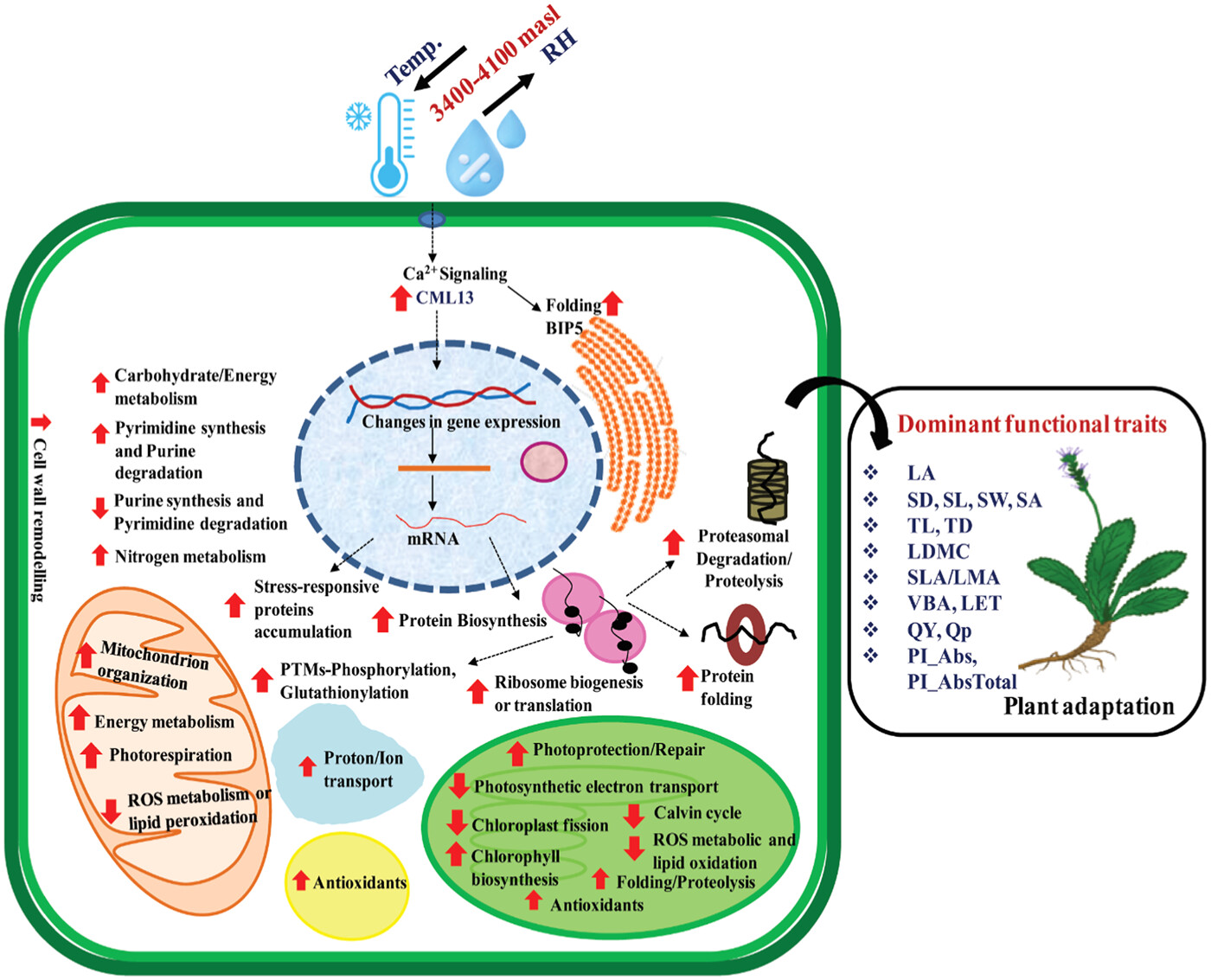Functional trait correlation network and proteomic analysis reveal multifactorial adaptation mechanisms to a climatic gradient associated with high altitude in the Himalayan region

Manglesh Kumari and Rajiv Kumar
Abstract
Globally occurring changes in environmental conditions necessitate extending our knowledge of the system-level mechanisms underlying plant adaptation to multifactorial stress conditions or stress combinations. This is crucial for designing new strategies to maintain plant performance under simultaneous abiotic pressure. Here, we conducted our study at Rohtang Pass and sampled Picrorhiza kurroa leaves along high-altitude gradient (3400, 3800 and 4100 meters above sea level) in the western Himalayas. The results showed the functional traits associated with morpho-anatomical structures and eco-physiological performances are highly variable. The air temperature and relative humidity represent dominant environmental factors among others that significantly regulate plant's physiological performance by adjusting the functional traits in altitude-specific manner. A trait coordination network is developed among significantly altered plant functional traits, which reveals high-altitude associated trait-based adaptation. Moreover, it reveals leaf area shows the highest degree, while photochemical quenching reflects the weighted degree of centrality in the network. Proteomic analysis reveals various stress-responsive proteins, including antioxidants were accumulated to deal with combined stress factors. Furthermore, a high-altitudinal protein interaction network unravels key players of alpine plant adaptation processes. Altogether, these systems demonstrate a complex molecular interaction web extending the current knowledge of high-altitudinal alpine plant adaptation, particularly in an endangered medicinal herb, P. kurroa.
Plant, Cell & Environment (IF 7.94)